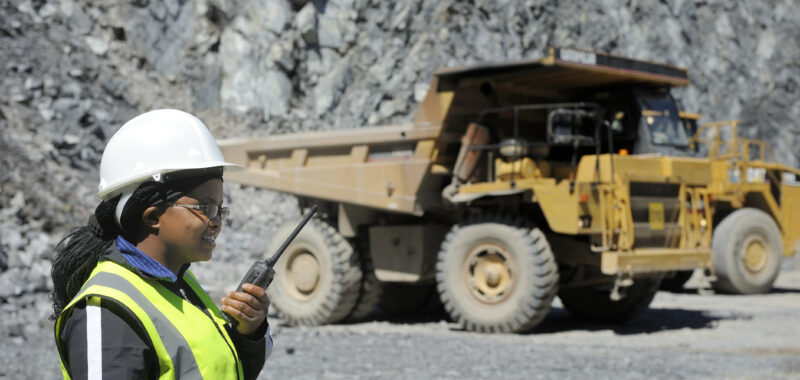You can get copper exposure by owning Copper Miners ETF, but you also get a lot more than copper.
Sometimes there’s no easy way to buy into an investment theme. That’s the big story behind Copper Miners ETF (COPX -4.05%), which states that it “provides investors access to a broad range of copper mining companies.”
As with all index-based exchange-traded funds (ETFs), however, you don’t really know what’s going on unless you actually take the time to look under the hood.
There are good reasons to buy copper
Copper is an important metal. It gets used by all sorts of industrial companies because of its ability to conduct electricity and the ease with which it can be manipulated. To be fair, there are other metals that are more conductive, like silver. It’s the cost/benefit profile for this metal that makes copper so attractive in industrial uses. Because of its industrial use, demand for copper is often tied to economic cycles. That said, the world is increasingly moving toward electrification and digitization, both huge trends that will likely increase demand for copper.
Image source: Getty Images.
Still, the cyclical nature of copper demand has to be juxtaposed against the supply dynamic. The metal has to be mined and processed before it can be used. That’s where copper miners come in.
If you are looking for direct exposure to copper, buying an exchange-traded fund that is designed to directly track the price of copper would probably be the best option. United States Copper Index Fund (CPER -4.49%) does this via futures contracts.
But, as with other metals (such as gold), tracking copper prices means the metal’s value will drive performance. Commodity prices can be volatile, and there’s no potential for business growth, which one would have with an investment in a miner. Simply put, a miner can build a new mine and increase its output, but a pound of copper will always and only ever be a pound of copper.
Copper Miners ETF is not entirely an accurate name
A fund like Copper Miners ETF exists to provide investors with a mix of indirect exposure to copper and the potential to benefit from the growth of the miners that are producing the metal. Clearly, the copper exposure comes from the sale of the mined copper, which will impact a miner’s top and bottom lines. However, it is the growth potential of the mining businesses that is probably the most important factor for investors to consider when comparing the Copper Miners ETF to the United States Copper Index Fund.
Only there’s another small wrinkle here. Remember, the ETF’s objective is to give “investors access to a broad range of copper mining companies.” What exactly does that mean? To simplify things, miners generally don’t just mine for one single metal. And even if they are focused on just one metal, like copper, there are usually other metals that come up along with it, like silver and gold. So there’s really no such thing as a pure-play copper miner.
That’s where a look inside Copper Miners ETF’s holdings can provide some insight. There are several large investments in foreign miners (non-U.S. holdings make up a massive 90% or so of the ETF’s assets), so to keep things simple only a few U.S-listed miners will be considered here. They are big names, however, including Teck Resources (TECK -3.63%), Freeport-McMoRan (FCX -3.86%), and Southern Copper (SCCO -4.36%). All three are in the top 10 holdings of the ETF.
Teck Resources is a top 10 producer of copper, so it is definitely an important copper miner. However, it also produces zinc and steelmaking coal. In fact, in 2023, copper and zinc together only made up 25% of the company’s earnings before interest, taxes, depreciation, and amortization. To be fair, Teck is looking to get out of the coal business, so copper and zinc will eventually be the main focus. But copper still won’t be the sole focus even after the corporate overhaul.
Freeport-McMoRan pitches itself as a copper company. It owns three of the top eight largest copper mines in the world. But when you look at the miner’s actual production, it includes copper, gold, and molybdenum. Sure, copper accounted for 75% of the company’s revenue in 2023, but gold was still 15% and molybdenum 8%. That is a far cry from a pure-play copper investment, even though it is mostly a copper miner.
Southern Copper claims to have the highest copper reserves of any publicly listed company. And copper still only made up around 76% of its revenue in 2023. The rest was a mix of molybdenum (13% of sales), zinc (3%), sulfuric acid (3%), silver (3%), and “other.” It is most certainly a copper miner, but again, it is not a pure play in the space.
Is it worth buying Copper Miners ETF?
Although that’s just three of the miners in the ETF, it highlights what you’re likely to find with just about every miner it owns. Mining is more complex than the Copper Miners ETF lets on. And given the heavy foreign exposure, the fund’s expense ratio is a little high at 0.65%. So you are paying a lot to own a fund that’s mostly doing what you expect it to do, but not completely doing what you expect given its highly specific name.
This might be OK for some investors, so long as they go in knowing what they are getting when they buy Copper Miners ETF. But for a lot of people, simply investing directly in a couple of mining stocks might work out just as well. And it could end up costing a lot less money if you use a broker that offers free trades and fractional-share purchases.

